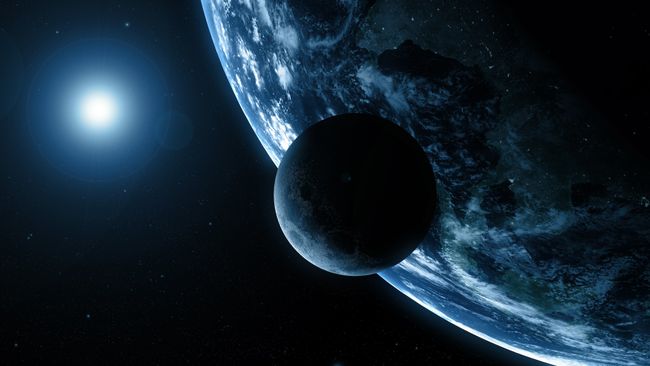Study Proposes Longer Days on Early Earth May Have Triggered Major Evolutionary Leap
A new study reveals that the moon was once thousands of miles farther from Earth, resulting in days that were 2.2 hours longer.
The moon is floating 8,730 miles farther from our planet than it did in the past and Earth’s days were over two hours longer two cycles ago, stated the scientists.
These may in turn have fostered oxygenation events that opened up a time when life’s collected profusion was set on its head, according to the study researchers.
Such shifts in daylength may affect distribution of the solar energy and temperature differences, weather patterns and atmospheric processes, the researchers noted in the new paper, released Aug. 6 in the Public Library of Science’s Proceedings of the National Academy of Sciences.
Today, the moon takes a traverse of 238, 855 miles (or 384, 400 kilometers) on an average to revolve around the Earth. But our satellite has not always been in the position it occupies now.
Related: Earth is off balance, and days are becoming longer — due to actions of people
To explain the specifics on various existing day lengths ranging currently at approximately 24 hours, there had to be changes in the earth’s formation. Eventually, the moon pulls on our planet. . In doing so, it transfers its kinetic energy from the Earth and effectively ‘moves away from’ the planet. Consequently, the Earth’s rotation around the axis decelerates, prolonging Earth’s days as the study shows.
One way to model this is to track changes in how the Earth wobbles as it spins, and this can provide a crude picture of this slowdown over the planet’s history. But this estimate appears to be in error, given that the forecast it yields indicates that Earth and the moon would have merged around 1. 5 billion years ago, the study authors pointed out.
In the new study, a team led by geologist He Huang from the Chengdu University of Technology in China attempted to outline the history of spin history observing eight datasets reluctant to marine environments of rock layers of roughly 700 million to 200 million years ago. These tidalites, as they are referred to, can give details of tidal force over a period by showing the thickness of the ocean. The team then added these datasets to models of the tidal forces between the moon and the earth with the aim of showing how fast the earth rotated on its axis in the half a billion years the study was done.
Two rapid and steep phases of increasing the speed of the Earth’s spin were followed by long phases of little change in its spin rate that the researchers termed as “staircases of spin”. Incomplete data for the intervening years prevented their inclusion in the aggregate, but over the study period, days were 2. Over double the amount of time they are now: 2 hours longer. They also found that the moon was during this period on average 12,000 miles (20,000 km) away.
Of these time spans, one, the neoproterozoic era, lasted approximately from 65 to 5oo million years, during which the Cambrian’ explosion occurred and life forms proliferated and began to fill new ecological opportunities. The second ‘step’ in this staircase, according to many scientists, was established around 340 million to 280 million years ago at a time when the Earth was dominated by giant glaciers.
So having raised the day length — and, thereby, solar exposure — the moon may have caused great oxygenation events which drove the evolution and differentiation of life. But those results “have to be discussed with caution,” the authors underscored in the study.
The study also casts doubt on another theory: that a time when glaciers proliferated and lead to a mass extinction impacted Earth’s spin greatly. Instead, most of the deceleration is caused by tidal forces, they argued.
Do not forget to share your opinion with us to provide you with the best posts !




0 Comments